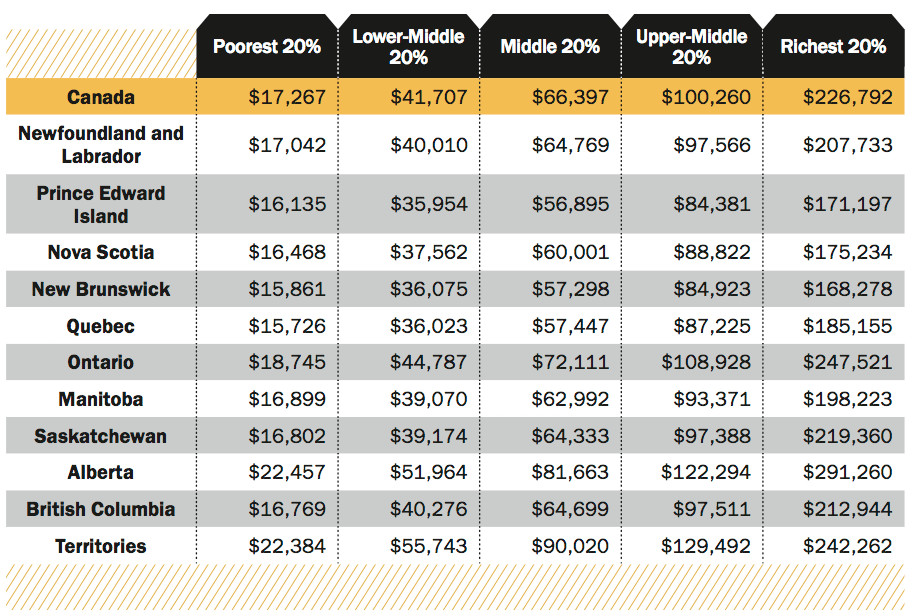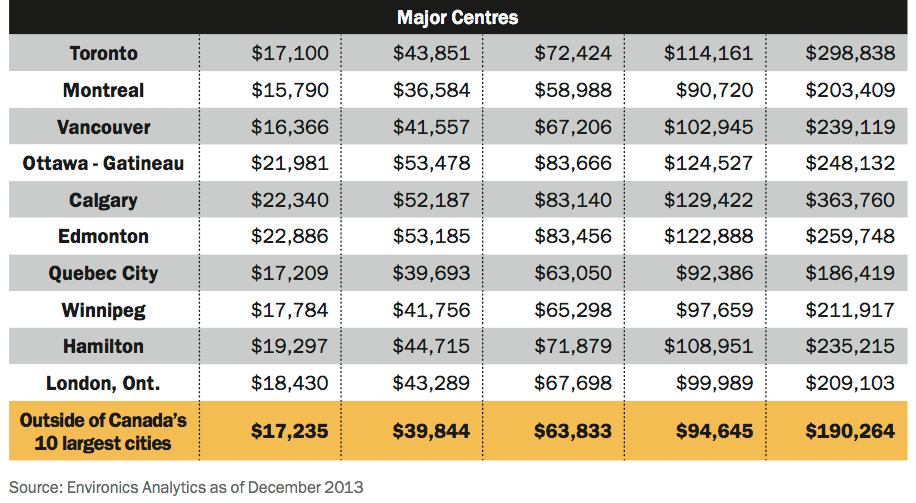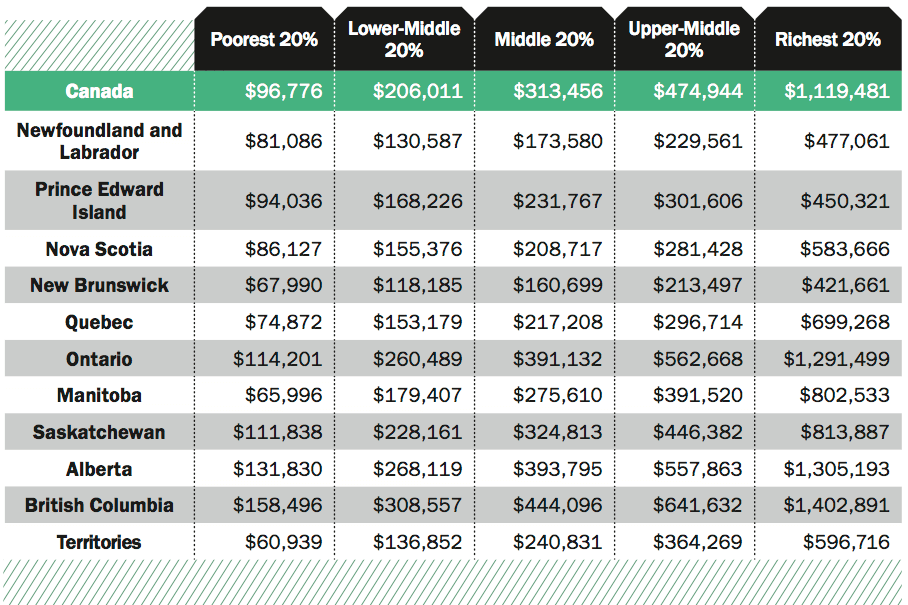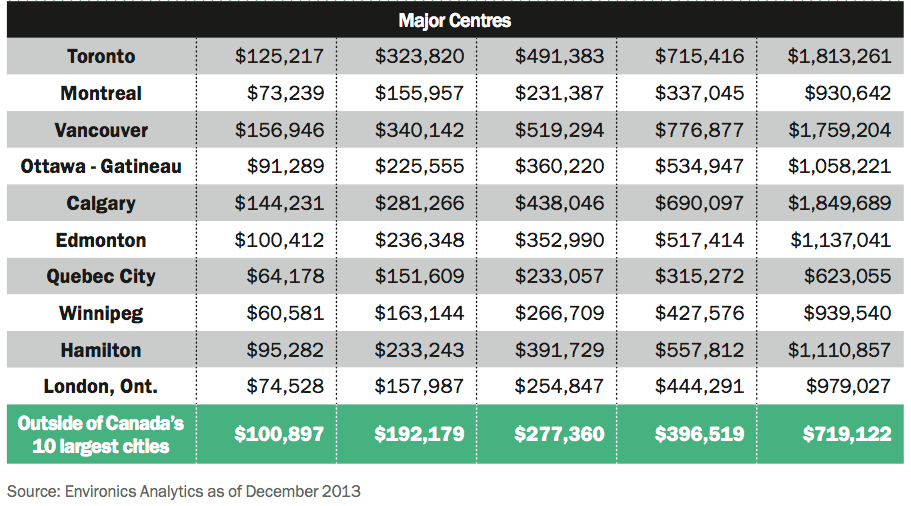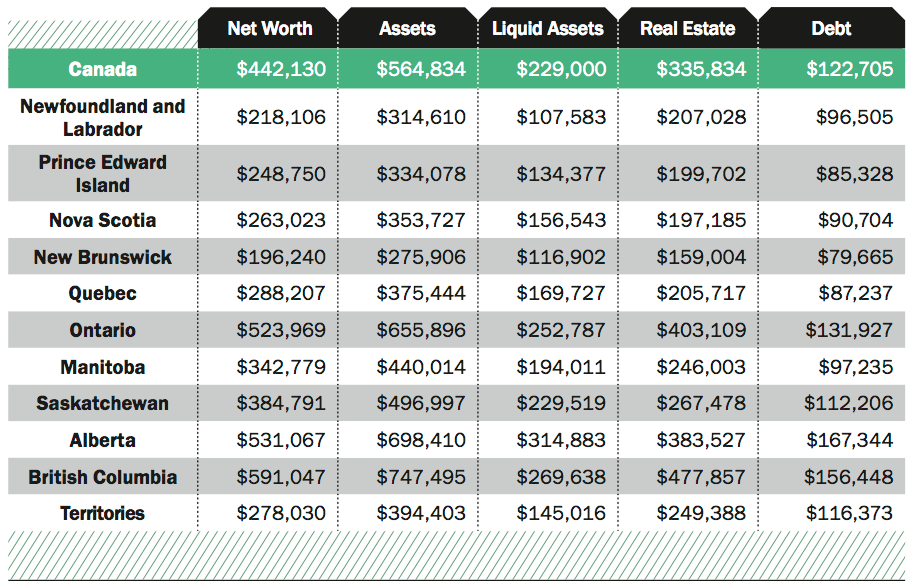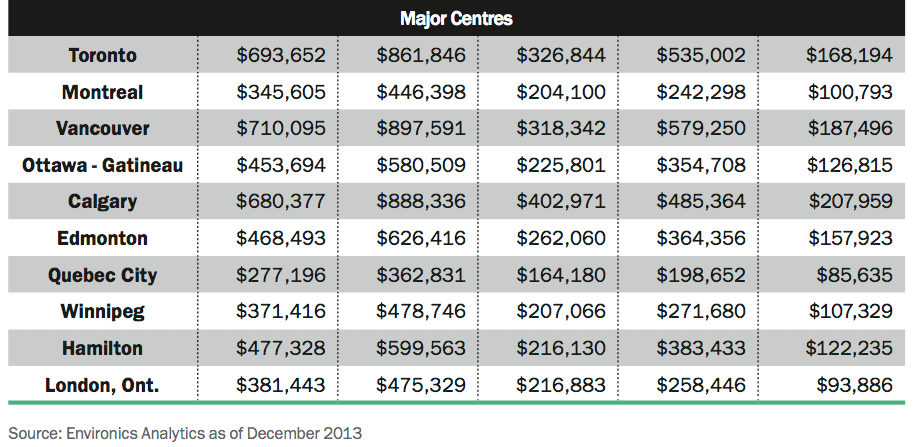The "low income" map has shifted and expanded quite dramatically over the last several decades (though many inner city low income sections remain) but most of the wealthiest neighborhoods in the city today were also the wealthiest neighborhoods in 1960.
Yorkville is the only area to have gone from an area with income below the CMA average to one of the very richest census tracts over time (the east Annex and Cabbagetown would be next down the list).
It isn't really surprising that the midtown Annex-Yorkville area was the first to really gentrify in the 1960s, given its location between downtown (and U of T) and the traditional "favored quarter" running north of downtown.
Come to think of it, New York is probably the only North American city where gentrification has brought a significant number of census tracts into the very top tier of wealth. Half a century ago, only the area near Park Ave. could really compare to the wealthiest suburbs of Westchester, Connecticut etc. But today a lot of Manhattan from Central Park southward is that wealthy (New York County's per capita income exceeds all of the suburban counties).
San Francisco maybe also.
New York is also the clearest "doughnut" metro: affluent in the center (Manhattan and Brownstone Brooklyn), lower income in the next ring (most of the outer boroughs and urban New Jersey) and then surrounded by affluent suburbs again. There's a slight northward bias towards Westchester/Fairfield but Long Island has equally wealthy areas. Law firm partners who don't live in Manhattan would come in from north of the city, from Long Island, from New Jersey etc.
Toronto's 3 Cities model does indeed suggest a "doughnut" trend: the core is increasingly affluent and the wealthy suburban districts tend to be closer in and more accessible to the core, while Scarborough, north Etobicoke, etc. are lower income. But there's also more of a "favored quarter" running north. Most law firm partners on Bay St. would live in this northern zone, a few would come from the west and very few from the east.
Chicago is a good example of a "favored quarter" (more pronounced than Toronto): the vast majority of "partners at the law firm" would commute from the North Side and North Shore suburbs. Though obviously there's a "doughnut" pattern there too.
